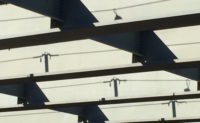NYC: What are the challenges you hear come up the most when you listen to the contractors talking about these jobs?
RH: What’s difficult about building down here are just the constraints placed on them on the very tight roadway network, the way they have to be shared the way they have to be regulated for safety. And the community is very vocal. The elected officials are very vocal. Everybody has an idea on the way things should be done. So that complicates things. All the competing and overlapping regulations that have been around for a long time – that complicates things.
But the regulations are all for a need. They were driven by an incident that happened in the past that you don’t want to happen again. Buildings are most vulnerable for things to fall off or for collapse is when they’re in construction. It’s just the nature of things. So you have to have strict regulations to try to minimize those things to the greatest degree possible. It doesn’t always make sense to everybody that they need to be regulated to this degree but in the bigger picture it does. It’s always that healthy conflict between regulation and getting the job done for economic development.
NYC: Will the LMCCC be around forever? Will there be a need beyond this particular wave of construction?
RH: I’m not sure there would be. There could be some sort of a coordination effort but [an organization like LMCCC] makes more sense to me when you have massive construction going on, bumping lots of buildings lots of roadways lots of infrastructure all trying to take place in the same place at the same time. Once all of this is done in – whatever date you want to pick – 2014, 2017, 2020, I don’t think there’s a need. By then the remaining work will be easier to coordinate and get done. Most of the buildings will be in place. Then it’s almost like you’ve built a big project and you go from the construction phase into the operations phase. There are other parts of the city, though. Maybe something like this will need to happen in Midtown with the East Side Access project and THE Tunnel from New Jersey and when the West Side takes off. If all of that happens at the same time then maybe this kind of thing will need to be created to revitalize that area.
NYC: Once all the work is done, what are we all going to have left to talk about?
RH: [Laughs] I don’t know. I do know I won’t have to talk so much! I didn’t think I’d ever do this kind of job again. Although I did it for 10 years at the Port Authority, I found it being kind of painful in this kind of position. I have a great team that I lead here, but it’s tough. The more that’s at stake and the less formal authority you have, the harder the job is, quite frankly. If you’ve done this kind of thing your whole life – big projects for Exxon, big projects for the Port Authority – you’re driven to see them succeed, to see them get done. A difference I see between a project manager and a normal person – and I don’t construe us as normal – is that if something comes up that looks bad [a normal person] would kind of say, “Well, maybe if I just wait awhile it will go away or God will intervene.” As a project manager you learn that because everything is on a tight schedule and so compressed it isn’t going to go away. It’s only going to get worse. So your immediate inclination is to set your own and everybody else’s hair on fire to get it resolved before it becomes more serious.
NYC: Is that what you do?
RH: Absolutely [Laughs]. Those are the successful project managers who are good at lighting everybody’s hair on fire. Maybe not the most loved but the best.





Post a comment to this article
Report Abusive Comment